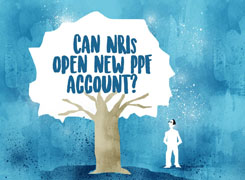Omkeshwar Singh | Answer |Ask -Follow
Head, Rank MF - Answered on Nov 17, 2022

I am 37 years old, and want to build a corpus of 80 lakh in next 12 years for my child education. I want to take moderate risk. I am having sip of 16000 per month in following funds. Please review my profile and suggest any modification of funds.
Sbi blue chip 3000 pm
Mirae asset emerging bluechip 2500 pm
Quant multi asset fund 4000 pm
Uti flexi cap fund 1500 pm
Mirae asset tax saver 5000 pm.
You may like to see similar questions and answers below
Reetika Sharma |459 Answers |Ask -Follow
Financial Planner, MF and Insurance Expert - Answered on Dec 24, 2025
Reetika Sharma |459 Answers |Ask -Follow
Financial Planner, MF and Insurance Expert - Answered on Dec 24, 2025
Reetika Sharma |459 Answers |Ask -Follow
Financial Planner, MF and Insurance Expert - Answered on Dec 24, 2025
Reetika Sharma |459 Answers |Ask -Follow
Financial Planner, MF and Insurance Expert - Answered on Dec 24, 2025
Reetika Sharma |459 Answers |Ask -Follow
Financial Planner, MF and Insurance Expert - Answered on Dec 24, 2025
Reetika Sharma |459 Answers |Ask -Follow
Financial Planner, MF and Insurance Expert - Answered on Dec 24, 2025
Reetika Sharma |459 Answers |Ask -Follow
Financial Planner, MF and Insurance Expert - Answered on Dec 24, 2025
Reetika Sharma |459 Answers |Ask -Follow
Financial Planner, MF and Insurance Expert - Answered on Dec 24, 2025
Reetika Sharma |459 Answers |Ask -Follow
Financial Planner, MF and Insurance Expert - Answered on Dec 24, 2025
Reetika Sharma |459 Answers |Ask -Follow
Financial Planner, MF and Insurance Expert - Answered on Dec 24, 2025
Reetika Sharma |459 Answers |Ask -Follow
Financial Planner, MF and Insurance Expert - Answered on Dec 24, 2025




















